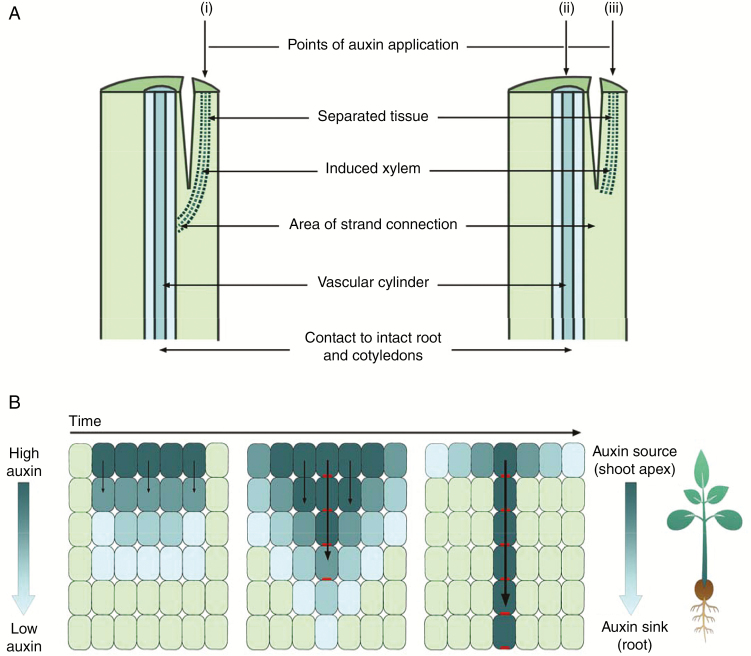Fig. 1.
Auxin canalization model of vascular differentiation. (A) Sachs’ experiments on pea. (i) Auxin was applied to a separated section of the stem, and strands of xylem were differentiated, connecting the source of auxin with the existing vascular cylinder. (ii) Auxin applied to the existing vascular cylinder and the (iii) separated tissue prevented differentiation of xylem in separated tissue. NB: when the amount of auxin applied to the separated stem tissue was increased, but the amount of auxin applied to the existing vascular cylinder was kept constant, differentiation in the separated tissue did occur. (Based on image and information from Sachs, 1969.) (B) The canalization theory-based model of auxin flow. Auxin moves from cells of high to low concentration, and the resulting auxin influx polarizes PIN1 efflux carrier proteins to the plasma membrane opposite the influx of auxin. This positive feedback loop results in the gradual narrowing of cells with polarized PIN1 and canalization of auxin transport. Dark blue cells contain high concentrations of auxin, light green cells contain low concentrations of auxin, and polarized PIN1 proteins are shown in red.

